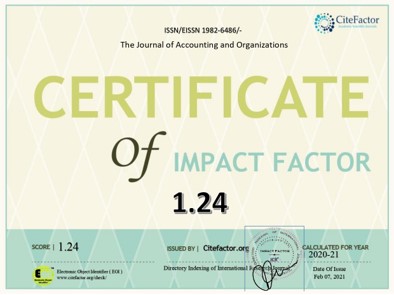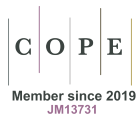Cluster analysis of IRPJ precedents in CARF
DOI:
https://doi.org/10.11606/issn.1982-6486.rco.2023.197181Keywords:
Corporate income taxation, Clustering, Taxation jurisprudence, Administrative Council of Tax AppealsAbstract
The objective of this study was to cluster judgments of the Administrative Council of Tax Appeals (CARF) related to corporate income tax (IRPJ) rendered between 2016 and 2020, employing machine learning (ML) techniques for the clustering of textual documents. The analysis resulted in 13 unique clusters, an unprecedented finding in the tax accounting literature in Brazil. This identification is relevant for the CARF, taxpayers, tax administration, and accounting and tax professionals involved in accounting and tax issues related to the IRPJ. The ML algorithms used proved efficient in solving complex natural language processing (NLP) problems, such as creating vector representations of terms and identifying themes in unstructured data, providing valuable contributions to understanding controversial IRPJ issues in light of administrative case law. The clustering of precedents translates into greater accessibility and analysis of patterns in judgments, facilitating decision-making in tax accounting.
Downloads
References
Borcan, M. (2020, junho 8). TF-IDF Explained And Python Sklearn Implementation. Medium. https://towardsdatascience.com/tf-idf-explained-and-python-sklearn-implementation-b020c5e83275
Calambás, M. A., Ordóñez, A., Chacón, A., & Ordoñez, H. (2015). Judicial precedents search supported by natural language processing and clustering. 2015 10th Computing Colombian Conference (10CCC), 372–377. https://doi.org/10.1109/ColumbianCC.2015.7333448
Oliveira, R. S., & Nascimento, E. G. S. (2021). Clustering by Similarity of Brazilian Legal Documents Using Natural Language Processing Approaches. Em Artificial Intelligence (Vol. 0). IntechOpen. https://doi.org/10.5772/intechopen.99875
Oliveira, R. S., & Nascimento, E. G. S. (2022). Brazilian Court Documents Clustered by Similarity Together Using Natural Language Processing Approaches with Transformers. arXiv:2204.07182 [cs]. http://arxiv.org/abs/2204.07182
Dhanani, J., Mehta, R., & Rana, D. (2021). Legal document recommendation system: A cluster based pairwise similarity computation. Journal of Intelligent & Fuzzy Systems, 41(5), 5497–5509. https://doi.org/10.3233/JIFS-189871
Freitas, V. P. de. (2011). Ementas de acórdãos pedem clareza e precisão. Consultor Jurídico. http://www.conjur.com.br/2011-nov-13/segunda-leitura-ementas-acordaos-pedem-clareza-precisao
Liu, Z., & Chen, H. (2017). A predictive performance comparison of machine learning models for judicial cases. 2017 IEEE Symposium Series on Computational Intelligence (SSCI), 1–6. https://doi.org/10.1109/SSCI.2017.8285436
Martins, A. D. M. (2018). Agrupamento automático de documentos jurídicos com uso de inteligência artificial. https://repositorio.idp.edu.br//handle/123456789/2635
Panagopoulos, D. (2020). Clustering documents with Python. Medium. https://towardsdatascience.com/clustering-documents-with-python-97314ad6a78d
Rêgo, A. G. (2020). Em que medida um tribunal administrativo tributário federal contribui para a defesa de interesses da sociedade brasileira [Curso de Altos Estudos em Defesa (CAED)]. Escola Superior de Guerra (Campus Brasília). https://repositorio.esg.br/handle/123456789/1124
Rodríguez, Z. E. M. (2015). Aplicación de la minería de datos distribuida usando algoritmo de clustering k-means para mejorar la calidad de servicios de las organizaciones modernas caso: Poder judicial. Repositorio de Tesis - UNMSM. https://cybertesis.unmsm.edu.pe/handle/20.500.12672/4472
Serpa, S. de V. (2021). Uma análise econômica do contencioso tributário brasileiro [Dissertação de Mestrado em Economia do Setor Público, Universidade de Brasilia]. https://repositorio.unb.br/handle/10482/42310
Serras, F. R. (2021). Algoritmos baseados em atenção neural para a automação da classicação multirrótulo de acórdãos jurídicos [Text, Universidade de São Paulo]. https://doi.org/10.11606/D.45.2021.tde-07062021-135753
Silva, I. L. A. da, Mello, R. F., Miranda, P. B. C., Nascimento, A. C. A., Maldonado, I. W. S., & Filho, J. L. M. C. (2021). Assessment of text clustering approaches for legal documents. Anais do Encontro Nacional de Inteligência Artificial e Computacional (ENIAC), 37–48. https://doi.org/10.5753/eniac.2021.18239
Thangaraj, M., & Sivakami, M. (2018). Text Classification Techniques: A Literature Review. Interdisciplinary Journal of Information, Knowledge, and Management, 13, 117–135. http://dx.doi.org.ezproxy.usal.es/10.28945/4066
Yang, F., Chen, J., Huang, Y., & Li, C. (2020). Court Similar Case Recommendation Model Based on Word Embedding and Word Frequency. 2020 12th International Conference on Advanced Computational Intelligence (ICACI), 165–170. https://doi.org/10.1109/ICACI49185.2020.9177720
Downloads
Published
Issue
Section
License
Copyright (c) 2023 Fabiano de Castro Liberato Costa, Antonio Lopo Martinez, Roberto Carlos Klann

This work is licensed under a Creative Commons Attribution-NonCommercial-NoDerivatives 4.0 International License.
The RCO adopts the Free Open Access policy, under the standard Creative Commons agreement (CC BY-NC-ND 4.0). The agreement provides that:
- Submission of text authorizes its publication and implies commitment that the same material is not being submitted to another journal. The original is considered definitive.
- Authors retain the copyright and grant the journal the right of first publication, with the work simultaneously licensed under the Creative Commons Attribution License which allows the sharing of the work with acknowledgment of authorship and initial publication in this journal.
- Authors are authorized to take additional contracts separately, for non-exclusive distribution of the version of the work published in this journal (e.g. publish in an institutional repository or as a book chapter), with necessary recognition of authorship and initial publication in this journal.
- Authors are allowed and encouraged to publish and distribute their work online (e.g. in institutional repositories or on their personal page) before or during the editorial process, as this can generate productive changes as well as increase the impact and citation of published work (See The Effect of Free Access).
- The journal does not pay copyright to the authors of the published texts.
- The journal's copyright holder, except those already agreed in the Free Open Access Agreement (CC BY-NC-ND 4.0), is the Accounting Department of the Faculty of Economics, Administration and Accounting of Ribeirão Preto of the University of São Paulo.
No submission or publication fees are charged.
Up to 4 authors per article are accepted. Exceptionally duly justified cases may be reviewed by the Executive Committee of the RCO. Exceptional cases are considered as: multi-institutional projects; manuscripts resulting from the collaboration of research groups; or involving large teams for evidence collection, construction of primary data, and comparative experiments.
It is recommended that the authorship be ordered by contribution of each of the individuals listed as authors, especially in the design and planning of the research project, in obtaining or analyzing and interpreting data, and writing. Authors must declare the actual contributions of each author, filling the letter to the editor, at the beginning of the submission, taking responsibility for the information given.
Authors are allowed to change throughout the evaluation process and prior to the publication of the manuscript. The Authors should indicate the composition and final order of authorship in the document signed by all those involved when accepted for publication. If the composition and authoring order is different than previously reported in the system, all previously listed authors should be in agreement.
In the case of identification of authorship without merit or contribution (ghost, guest or gift authorship), the RCO follows the procedure recommended by COPE.







